“中学生该不该在学校佩戴手机?”
辩论式学习,即全体学生始终围绕同一辩题,自主选择观点,形成正反两方,通过一定的组织形式,在课堂上运用自己所收集到的信息说明自己对某一事物的见解,并力求驳倒对方的论点。
Argumentative learning refers to that all students fall into the affirmative side and the negative side according to the opinions they choose based on the same debate topic. The students are encouraged to express their understanding towards a certain point of view by taking advantage of information collected and to refute others.

在学习了“科技与生活”这一主题时,苏城外的高中部学生不禁深思——“既然科技能带给我们如此多的实时信息,那我们能否带手机来学校呢?”
While learning the topic of “technology and life”, high school students in Soochow Foreign Language School can’t help thinking “Now that the technology can make us accessible to so much instant information, are we allowed to bring our cellphones to school?”
今天,在苏城外国语国际高中部的英语课堂上,就出现了一场针锋相对的辩论,到底谁能在这场唇枪舌战中更胜一筹,让我们拭目以待吧!
So here comes a hot debate on this topic, and let’s see who will be the final winner?
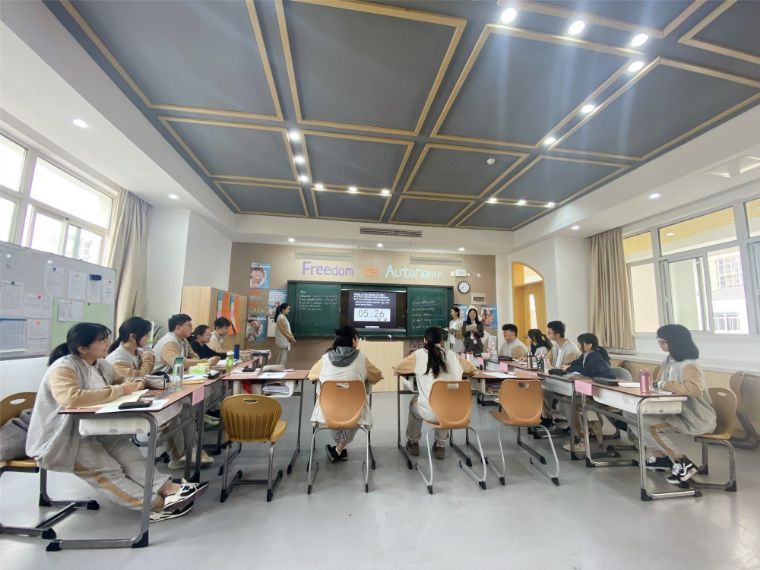


任课教师简介Techer Profile
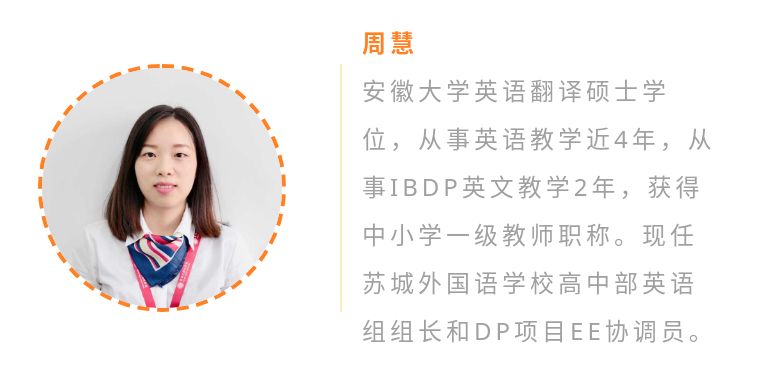
Joanna Zhou graduated from Anhui University with a master’s degree in English Translation and Interpretation. She has been engaged in English teaching for nearly 4 years, with 2 years in IBDP English B. She is awarded with primary and secondary first-grade teaching qualification.
Now she works as the English subject leader and EE coordinator in SCFLS senior high school.


在开展课堂辩论之前,学生就“中学生该不该在学校佩戴手机”这一辩题做了深入思考,并通过小组讨论、思维导图 的形式形成了正反两方的观点。
Before this debate, students have thoroughly considered “Whether should students be allowed to take cell phones in school or not?” in the form of group discussion and mind maps and finally both the positive and negative ideas are initiated.
最终形成了三大阵营:持“学校应允许中学生佩戴手机”的正方,持“学校不应允许中学生佩戴手机”的反方,还有两名学生作全程记录。
So the participants of this debate will be the affirmative side, the negative side and two recorders.


本次课堂的教学目标是:学生通过课堂辩论的形式探究“中学生该不该在学校佩戴手机”,并依托辩论中形成的个人观点及学过的基础写作知识,对一现象的优劣进行辩证的思考,并以辩论和论文的形式呈现。
Teaching objectives: Students are expected to explore “Whether middle school students should be allowed to bring their cellphones to school?” in the form of debate, and to thoroughly think about the debate topic and finally generate a paragraph writing based on their personal perspectives and writing skills learned.
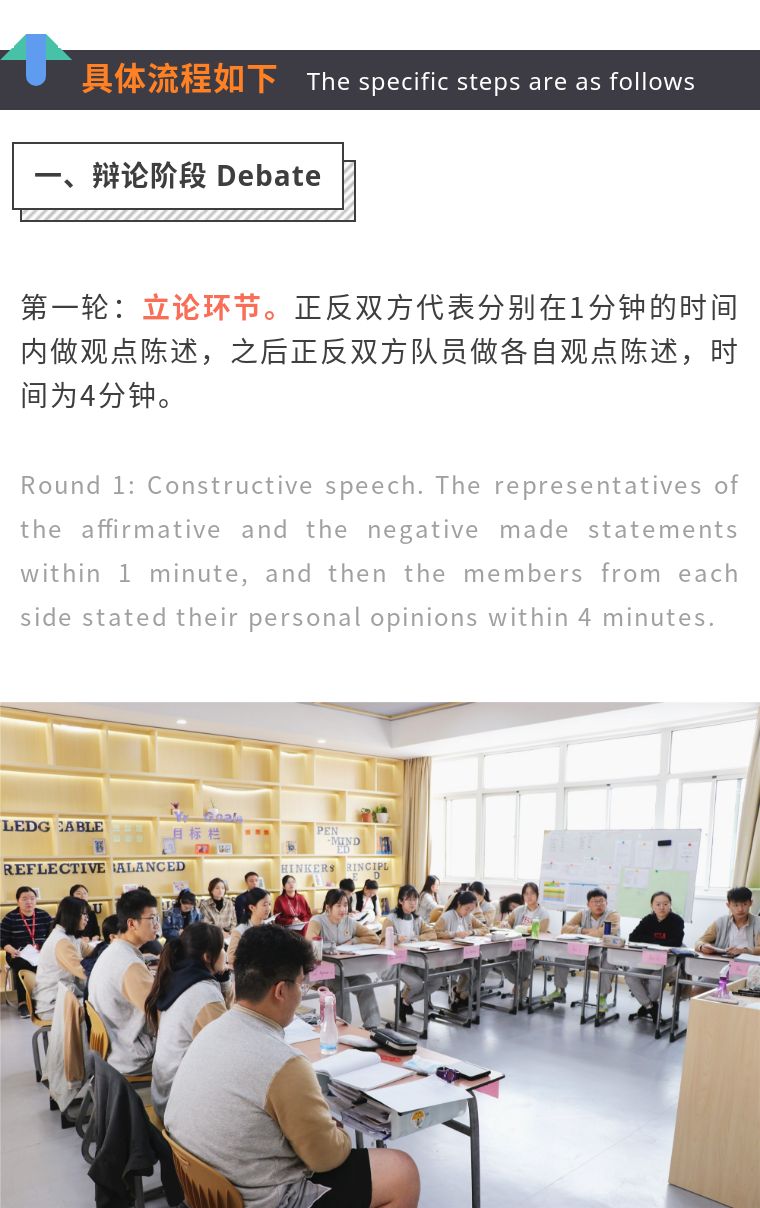
第二轮:自由辩论环节。正反方辩手自由轮流发言,时间为10分钟。
Round 2: Free debate for 10 minutes.
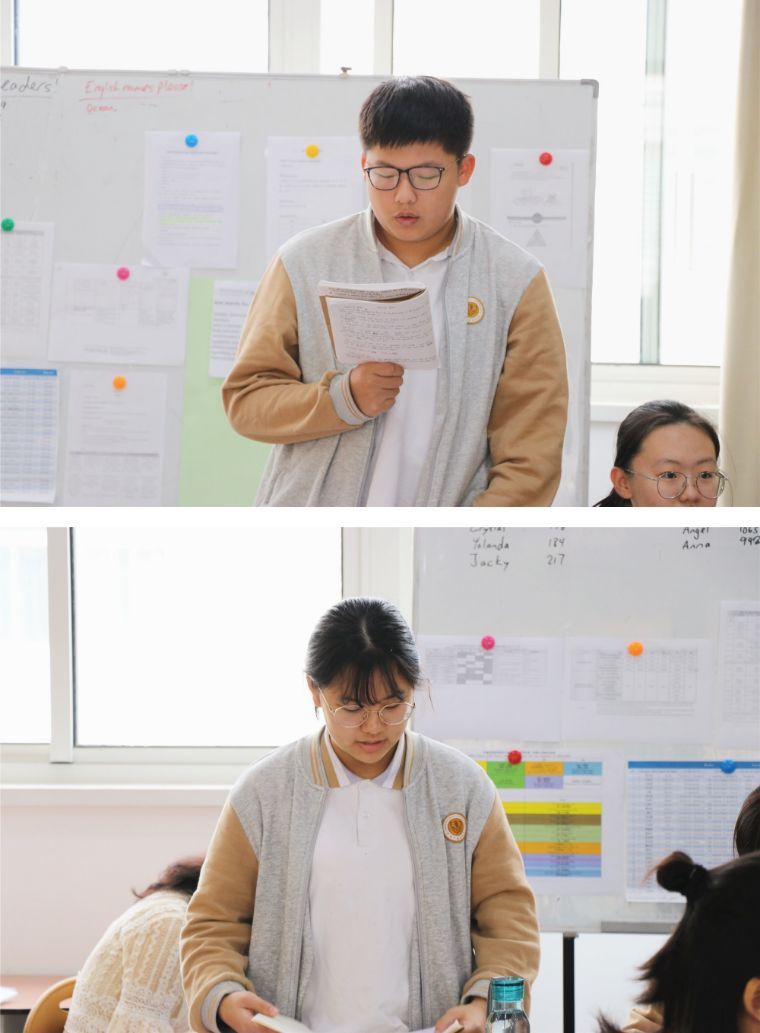
第三轮:结辩环节。正反双方代表针对辩论会整体态势进行总结陈词,时间分别为2分钟。
Round 3: Concluding speech. The representatives of the affirmative and the negative made a conclusion based on the debate process within 2 minutes.
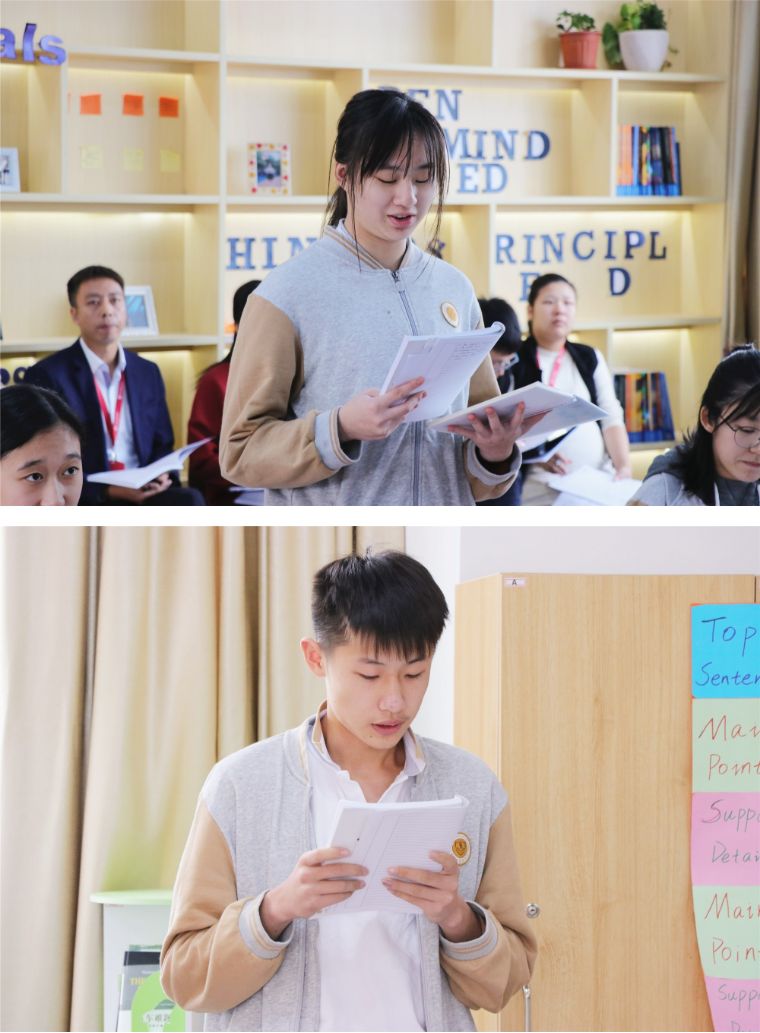
双方辩论期间,正反双方的两位记录员分别将各方的主要观点记录在黑板上,供辩论之后的写作参考。
Notice: During the debate, two recorders made notes of the gist on the blackboard for the affirmative and the negative respectively.
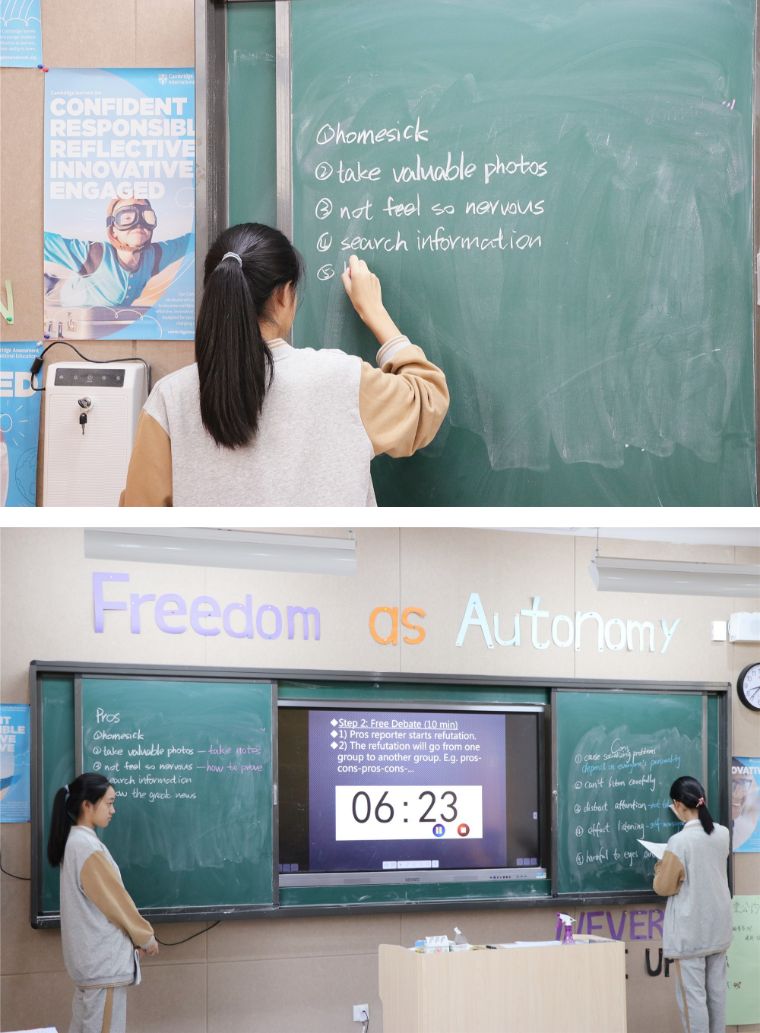

辩论后学生就辩论的形式和内容进行提问式反思。
我在辩论中知悉了对方的哪些观点?
这些观点是否同我的观点根本矛盾且不可调和?
我是如何通过辩论这种形式获取知识的?
Students reflected on the debate form and topic by asking questions. For example, what opinions have I got during the debate? Do these opinions contradict with mine? How do I achieve knowledge through the debate?
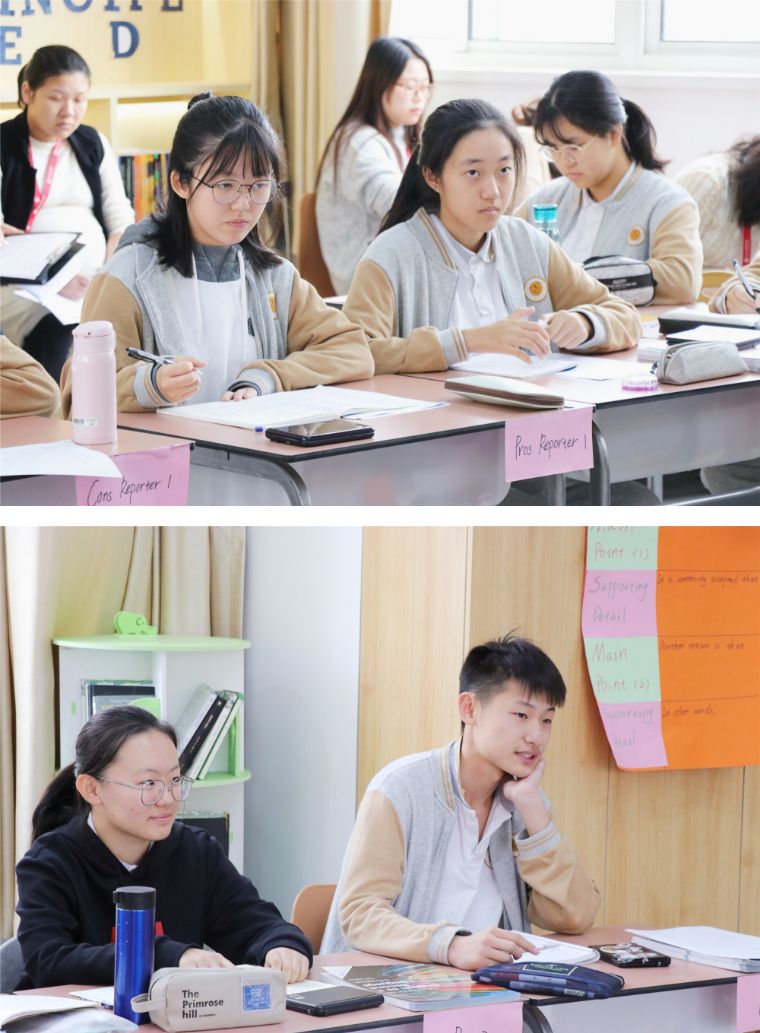

针对“中学生该不该在学校佩戴手机”这一论题,正反双方学生分别就各自在辩论中的观点来组织语言,完成一个段落的写作。在此之前,老师和学生一起回顾了段落写作的结构,即一个完整的段落需包含主题句、支撑句及总结句,并介绍了如何通过使用举例子、列数据、对比等方法展开对论点的陈述,为学生接下来的写作做好了铺垫。
Each student was expected to express their opinions in an academic paragraph after the debate. Before this, the paragraph structure, which had already been taught, was reviewed again to get the students ready for their writing.
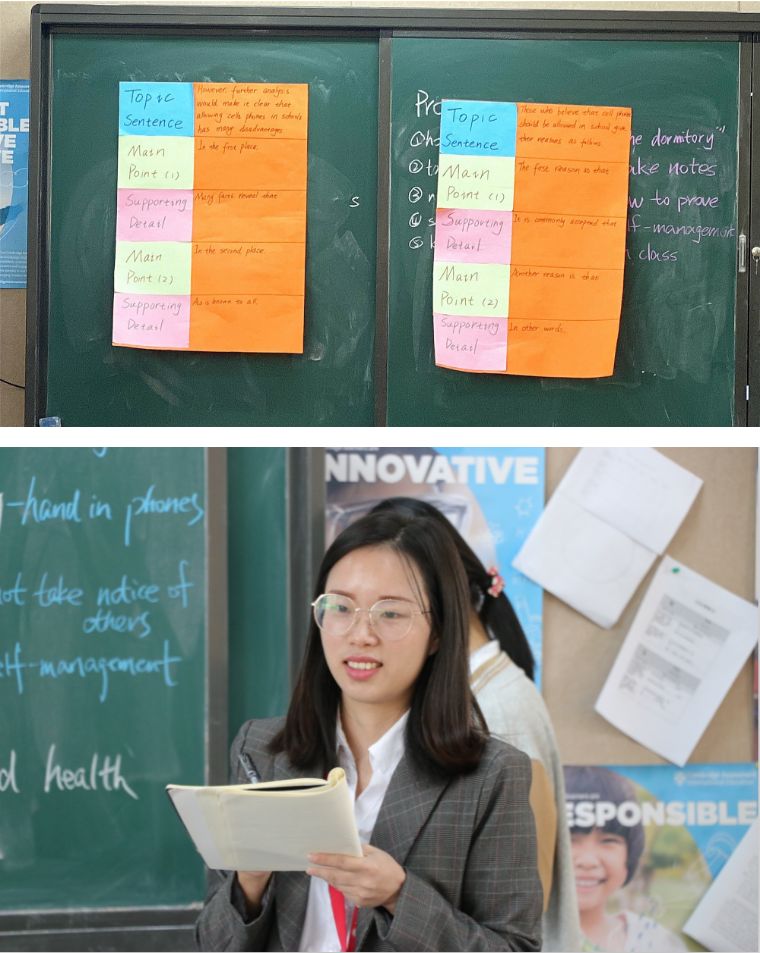
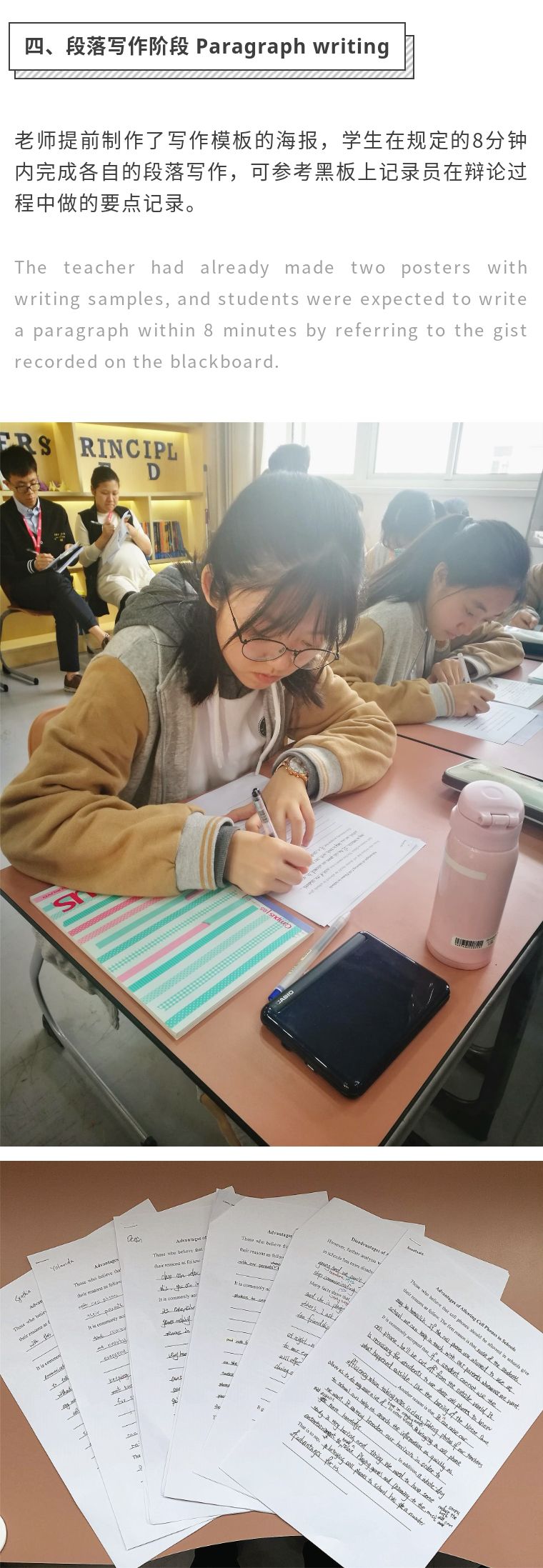

写作结束后,学生根据所给的段落写作标准检查清单,与同伴互改作文。
Students were asked to exchange their writing with peers and do evaluation according to the paragraph criteria checklist given.

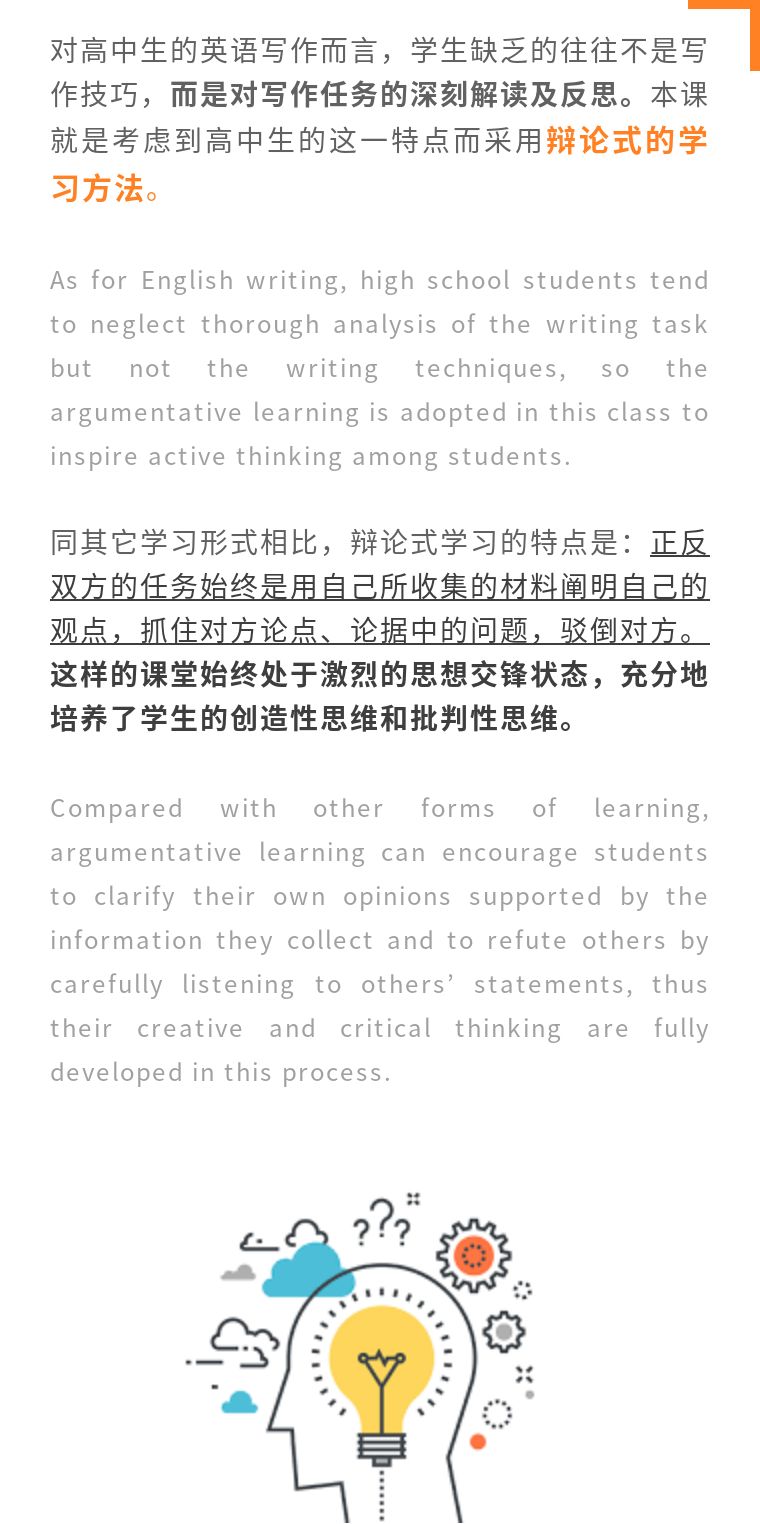
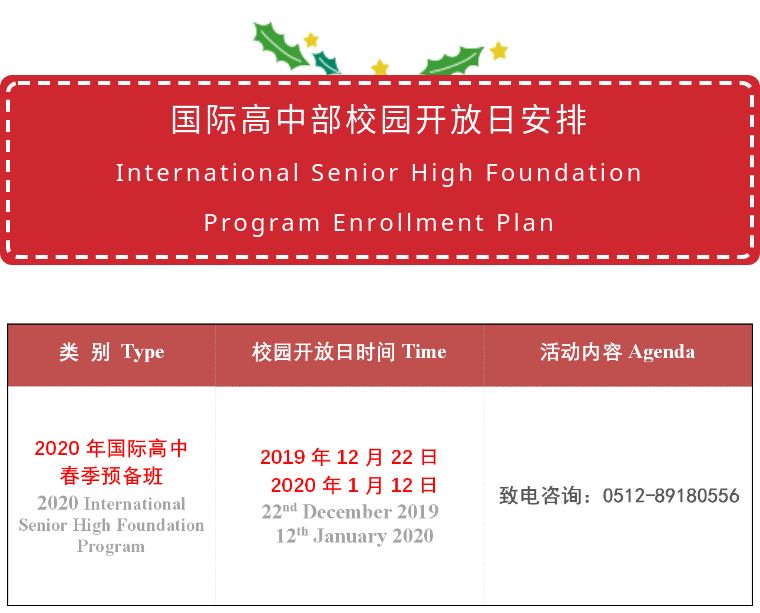

中文撰稿:周慧
英文翻译:周慧
摄影:宋柏霖
英文审核:语言中心
编辑、排版、审核:校长办公室 宣传办

 校长信箱:cj8101@163.com
校长信箱:cj8101@163.com
 招生热线:0512-89180556 / 89180555
招生热线:0512-89180556 / 89180555  应聘邮箱:hr@cscfls.com
应聘邮箱:hr@cscfls.com 学校地址:苏州市相城区金砖路399号
学校地址:苏州市相城区金砖路399号